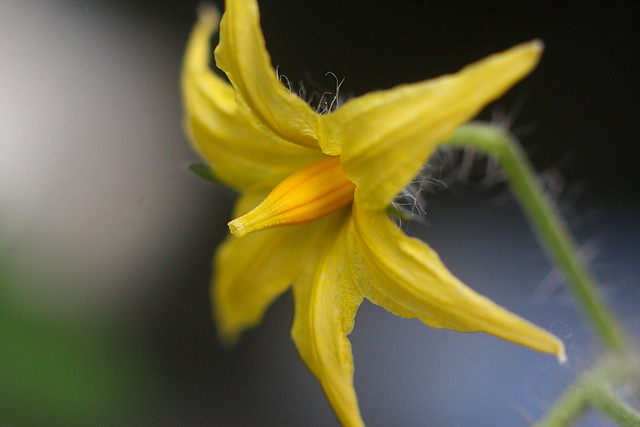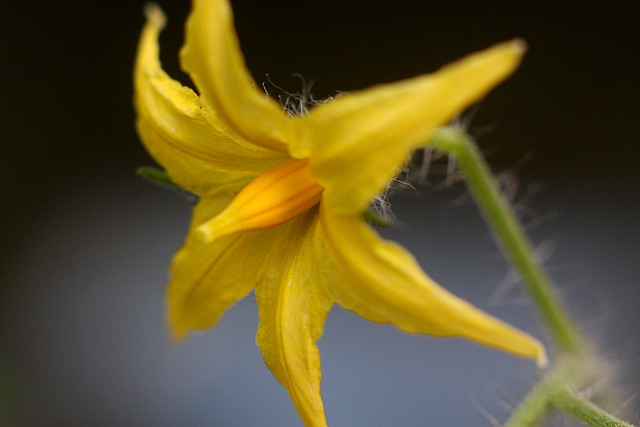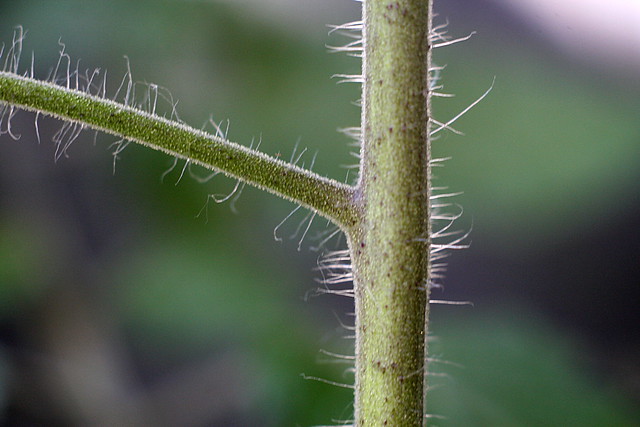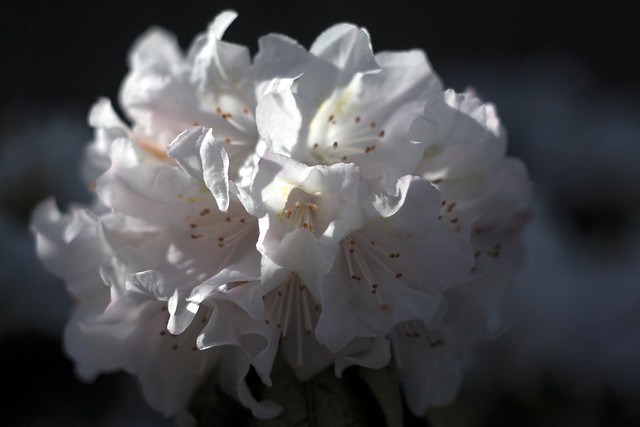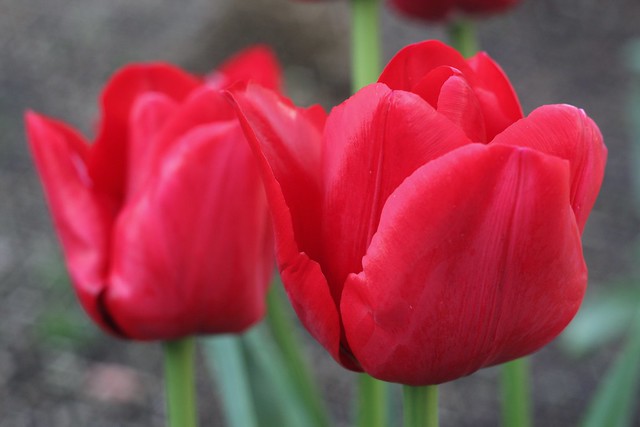One of my longer-running traditions here involves an annual, or sorta-annual, mid-January visit to a trio of early-blooming cherry trees in NW Portland, at the corner of NW 19th Avenue & Lovejoy St. I've been doing this since the late 2000s, and I spent several of the early installments trying to figure out what sort of magic was at work here, such that springtime seemed to arrive at this one streetcorner months before anywhere else in the city, and did so like clockwork year after year. As I mentioned in the 2018 edition, the most likely explanation seems to be that they're ordinary examples of a winter-blooming variety of cherry tree. In other words, although they seem to survive perfectly well here, their DNA is still coded for a warmer climate zone, somewhere where there might be a few pollinators out buzzing around this time of year. Then in 2019 I stumbled across another, larger group of cherry trees that appears to bloom even earlier than the Lovejoy ones, just a few blocks away on NW Overton near 24th. So the traditional spot wasn't even particularly unique, on top of everything else. Then I skipped the last couple of years due to pandemics and family medical stuff, and nearly forgot this time around. Forgetting would have been understandable, given that 2018 was several geological eons ago, or at least it feels that way. But I remembered, just barely, and made a quick visit, and here are the photos to prove it. It still wasn't quite like the Before Times; the usual streetcar ride and extended brewpub detour were in the cards this time, thanks to the currently-rampaging Omicron variant, so instead I just drove to the trees, parked without feeding the meter, took a few quick photos, and got out, mission accomplished. Still, I was happy to see the old trees again, doing their usual thing in the midst of yet another long, cold, dark winter. Which in the end is the entire point of doing this, not just to keep a long series going on a weird little website almost nobody reads.
Now, you might've noticed that these photos were taken a week ago, and wondered how it could possibly have taken me a week to write a couple of paragraphs about some flowers. This time around I thought I had this post almost done and ready to go, and then it occurred to me that I had never done the thing I often do for intersection paintings and that sort of thing, which is to plug the intersection name or street address into the local library's newspaper database, to see whether anything interesting or newsworthy ever happened around here. That sometimes comes up with a few interesting results, and this time was no exception, so it stretched out the effort on this post by a bit. So here's what I've got:
The earliest result for "19th and Lovejoy" that came back was from September 1910, when a tent in a vacant lot here would serve as a polling place in that year's primary election. That was immediately followed by real estate ads for a couple of years, touting the lot's prime location and large 100' by 100' dimensions. This was in turn followed by construction of the Royal Arms Apartments building (the adjacent brick building that sometimes appears cherry photos I take here, though none this year) in 1914. An ad for the building in August of that year describes it:
A building of class and refinement, five-story fireproof brick, covering 100x100 ft, on corner, among the homes of wealth and culture, with their beautiful gardens, trees, and shrubbery, and a grand panoramic view of the city and hills to delight the eye. All apartments have hardwood floors, telephones, latest lighting fixtures and all up-to-date conveniences. Otis automatic elevator with safety appliance; rooms large, with plenty light, ventilation, and closet space; prices moderate; reference required. For reservations apply on premises. Take either 16th st or “S” car north to Lovejoy St.
That December, a local timber baron bought the whole building as a $165,000 Christmas gift for his wife. It had been built for around $100k, per an article the previous month, so the original investors made out pretty well. He died just two years later, and the news story mentions the extravagant gift at length. The building went on to appear regularly in high society news items for a while. Important teas were hosted there regularly, and wedding announcements for young smart-set couples often noted they would be honeymooning overseas and then taking up residence at the Royal Arms upon their return, that sort of thing.
While this was going on, much of the world was embroiled in World War I. The United States intially stayed out of it, and was still largely unready after being dragged in in 1917. By July of that year, the US was slowly remembering out how to do some of the basics, like how to draft people into your army when you know you'll run out of willing volunteers before long. The first batch of draft notices since the Civil War went out with great fanfare, with the Oregonian devoting a couple of pages to printing the names and addresses of everyone local whose numbers had been drawn. I suppose to make it harder to weasel out of trench duty. A young man who lived at 19th & Lovejoy happened to be in the group whose number was drawn 21st, partway down the first column of the first page. Which sounds like bad news, but the paper noted that the men listed wouldn't be called up immediately as there were just enough volunteers to meet the immediate need. By December of that year they had still hadn't been called up; it seems the process to apply for a draft exemption had been bungled somehow and everyone who had applied would have to reapply, and they couldn't actually take in any of the potential draftees until that bit of paperwork had been resolved. The Oregonian took this opportunity to again print the names of everyone who had been listed back in July. I haven't searched WWI service records to see of any of these people were ever actually called up, but it looks like the kid from right here went on and lived to 1959, so one way or another he had made it out of the year 1918 and its various hazards. Which included a deadly flu pandemic, let's not forget. My own maternal grandfather had a similar experience around the same time, though in his case they decided his name was just too long and too German, and his services would not be required along the Western Front after all. So they ordered him to go work at Bethlehem Steel instead, and apparently forgot all about him at that point. Before long he decided steel mill work didn't suit him and quit, although they had never actually told him whether he was allowed to quit or not, and I haven't been able to find a definitive answer on that point either. Nobody ever came around looking for him, though.
Anyway, the Royal Arms high society stuff sort of tapered off with the Depression, and the building was sold in 1940 for 'just' $75,000. The news item was accompanied by a photo of the building, which shows different (and much taller) trees standing where the cherries are now, matching the trees along the front of the building along Lovejoy.
After WWII the building was largely in the news for catching on fire every now and then. Once in 1956, two times in 1960, and then a five-alarm fire in July 1978, in which the buildng's fire alarm system failed to work. Twenty-two injuries were reported, including fifteen firefighters. A photo elsewhere in the paper shows the outside of the building, partly blackened by smoke, and you can kind of make out what looks to be a couple of the present-day cherry trees, smaller and looking a bit worse for wear. Though whether that was due to the fire or the firefighters I don't know. An August news item called the fire a case of arson, while a September story said it was caused by a careless smoker. (The rest of that story concerns another NW Portland building with the same owner also catching on fire.) The building eventually reopened in 1980 after being restored with PDC money, and I don't see any further news reports about the place bursting into flame, which is always good to see.
And in historical entertainment news, in March 1961 actress Jane Russell came to Portland for a week or two, staying at the Royal Arms while making public appearances and doing charity work by day, and performing nightly at the city's Bali Hai Club by night. Russell was also invited to serve as grand marshal of the city's St. Patrick's Day parade a few days later. In a small blurb a few days before she arrived, the paper's nightclub entertainment column (a thing that once existed) described the upcoming residence: "March 8: Jane Russell will grace the Bali Hai stage — singing we imagine, or does it make any difference?". After she arrived in town, the Oregonian took a British journalist's reporting on her arrival and -- finding it a bit too snide to print unedited -- had one of their columnists insert parenthetical comments into it. A couple of days later the nightlife column affirmed that Russell's show was obviously the biggest live entertainment thing in the city but neglected to describe it in any detail, just saying "Need we say more?". The paper's TV and radio columnist managed a bit better, scoring a brief interview at the old Trader Vic's at the Benson as Russell stopped by for a late breakfast (as in 5pm, seeing as her nightly shows ran to around 2am.) The interview was cut short, though, as the writer had to hurry off to an Oregon Historical Society roundable about the Civil War. And was roundly mocked for doing so by the other roundtable participants.
As for the other three corners at the intersection, apparently one used to have a service station, from at least 1935 thru sometime in the 50s or maybe later. I know this because of endless help-wanted classified ads, and a 1935 ad announcing they had been chosen as Texaco's exclusive regional distributor for diesel and fuel oil. Which sounds important, I guess, though they don't explain how big their region was. Other than that, there's nothing of interest to share about the old gas station, but figured I should mention it, as you generally do want to know where old gas stations used to be, in case of forgotten underground tanks and so forth.
Oh, and one of the corners, and I'm not sure which one, was briefly home to Portland's very first modern fast food restaurant. In 1954, a burger place called "Scotty's Self-Service Drive In" opened here, bringing California's 19-cent hamburger craze to the Northwest. (The "self-service" in the name is never explained. I think free refills only appeared in the 1980s so it probably wasn't that.) So here's a large ad from November 1955 celebrating the would-be chain's second location at 12th & Sandy, highlighting their new 39-cent fish and chips (not available at the Lovejoy location), along with a plug for Scotty's Famous Forty-Fiver, which was a hamburger, fries, and a milkshake for 45 cents, now available with or without onions. A 1956 ad offered a fried half-chicken with fries for 89 cents, or for a quarter you could get something called a "Curly Dog", whatever it was (Tagline: "It's new! It's different! It's delicious!"). That ad doesn't mention the original Lovejoy location anymore, so it may have been gone already by then. The Sandy location lasted until at least 1973, per a tiny news item about a robbery, but was apparently gone by 1985 as it was mentioned as a defunct competitor in an article about the last Yaw's closing. A 1985 article about the fading remnants of 1950s hot rod car culture and the closing of another burger place -- the Speck, at SE 50th & Foster -- actually mentions Scotty's as the beginning of the end. As in, the replacement of classic 50s drive-ins by the modern fast food industry. To those of us a generation or two removed from those days this seems like a minor distinction, as they all served more or less the same menu, though maybe at different price points. It sounds like it was more of a cultural shift than a culinary one, with the newcomers being less welcoming toward bored teens lounging around in their parking lots all evening, revving their engines and generally being juvenile and delinquent. And you couldn't just go somewhere else that wasn't a drive-in and still have the same teen culture, I guess. That would be like 80s teen culture without suburban shopping malls. It's just unthinkable.
Anyway, that was our semi-brief foray into the history books. I was kind of hoping the trees were original to the building, but at least I have a rough possible range, sometime between 1940 and 1978. Which, depending on who you believe, makes them either very old or very young trees. An SFGate article says they generally live around 16-20 years, and the Iowa State Extension Service gives a lifespan of just 10-15 years in that state's harsher climate. A Town & Country article on the famous cherry trees in DC gives an average range of 30-40 years, but notes that a few dozen present-day trees are survivors from the original batch of trees in 1912, and mentions that some black cherry trees have lived to at least 250 years old. Which brings us to Japan, where one famous example is thought to be around 2000 years old, and the others on an official list of the Five Great Cherry Trees of Japan are only relative youngsters at around 1000-1500 years old. So, assuming these are the same trees as in the 1978 photo, can conclude that either these trees are already ancient survivors long past their usual die-by date, or they're still practically infants that could, in theory, potentially live beyond the year 4000 AD. I mean, that's unlikely to happen but just imagine it for a moment. And however that eventually turns out, the trees did already survive a five-alarm fire, which is not something you can say of many trees of any variety. So there's that.
